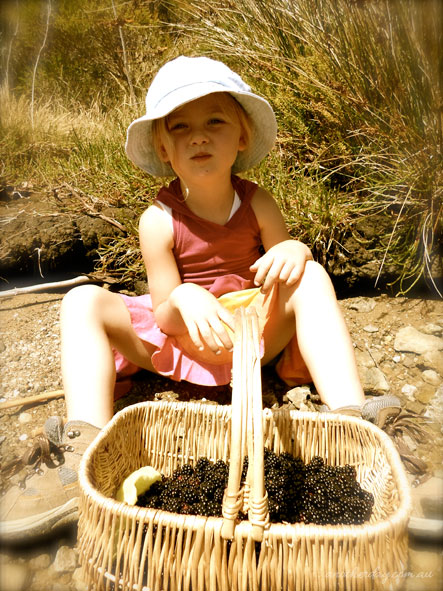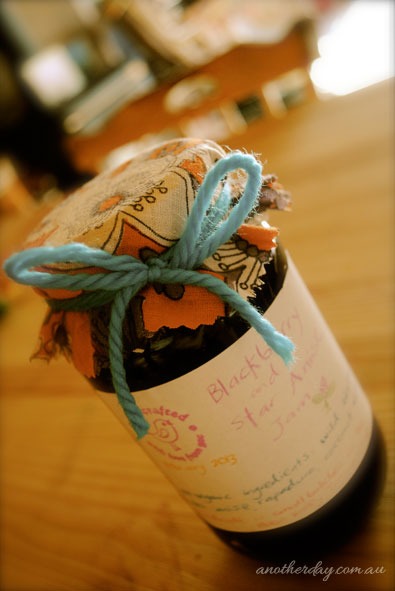Winter hibernation this year has me immersing myself in curriculum; digesting and getting my head around Grade 1 material to start looking at laying the foundation for Chilli’s first formal academic year in 2015. It’s all very exciting. And while we’ve gently woven a few very basic first grade elements into this Kindergarten year we are currently doing, there’s a great anticipation from all of us for the new year that will soon be upon us.
Now you know where I’ve been and why this space has been so silent of recent times. I figure if there’s one time a blog can get away with a little slumber, it’s definitely Mid-Winter! Whilst my silence here has not been intentional, it’s definitely been productive. I’m feeling wonderfully confident and inspired with the curriculum material we have decided to use for our homeschooling journey and I’m looking forward to starting to build that very important Grade 1 program.
Through these cooler days, which have only just as I’m typing started to really feel like a true Winter, we’ve been enjoying some wonderfully warming beverages made on deliciously creamy home-crafted nut milks. Making nut milks is nothing new for us, we’ve been doing it on-and-off for many years now, but to be honest I’ve always found the process a little tedious and difficult to fit into a busy home based family rhythm. That might sound a little strange, but squeezing nut milk out through a bag and having to gently, slowly wring down the bag, inevitably having a stream of random milk squirt out here, there and everywhere – it really wasn’t a very efficient daily task. However in our recent efforts to reduce unnecessary sugars that have crept back into our diet over the years, we’ve decided to make our own nut milk again. I’ve been quickly and efficiently straining our nut milks through a fine mesh sieve into a glass jar and drying off the meal that results from the straining. This meal can be ground up easily in a spice grinder to be used as nut meal in delicious paleo style baking applications or raw food treats. Using a mortar and pestle is another way to grind the dried meal and makes a wonderful handwork task for Kindergarten homeschooling! The nut milk that results from straining through a sieve as opposed to a bag, definitely has a higher content of meal in it – however we’ve really been enjoying this for not only nutritional reasons, but also the fact that it makes for a much creamier milk.
::We’ve been enjoying super simple vegan custards based on our homemade nut milks. Sweetened with some maple and thickened with Kudzu – it makes for a super simple dessert or snack when drizzled over some of that preserved Autumn fruit. Jude Blereau also has a great vegan custard recipe using coconut milk in her ‘Wholefood for Children’ book::
With this amazingly creamy, delicious nut milk, we’ve been enjoying herbal infusions, silky smooth hot chocolates and creamy spiced chai. It’s also been wonderful for making thick, velvety vegan custards. Perfect at a time of year when the ladies are taking their annual break and eggs are scarce!
Some of our favourite nut milk blends are;
• Lucuma, Vanilla Almond Milk
• Lavender infused Honey Cashew Milk (I infuse the lavender after the nut milk is blended/strained)
• Spiced Brazil Nut Milk sweetened with Stevia (cardamon is my favourite spice to compliment brazil nuts)
• Date sweetened Walnut Milk
Using the sieve straining method, Brazil and Walnut milks definitely make for a furrier texture. The family hasn’t been so keen on these two milks, merely because of the ‘furrier’ texture, but the almond and definitely the cashew milks are quite silky smooth. Into our nut milks, we normally incorporate some hemp seeds for a super protein and omega boost.
Making nut milk is super simple. The steps we follow are here;
• Put 1C activated nuts in the blender with any additional seeds and flavourings/sweeteners
• Add 2C of water and whizz to blend
• After a minute or so, we top the blender up to the remaining 4C mark and allow to blend for a good 3-4 minutes for a creamy incorporation of all ingredients
• Strain through a mesh sieve into a jug
• We find the nut milks are best consumed as fresh as possible. They normally don’t last more than 24 hours in our home anyway!
For a creamy hot chocolate we heat 4C of nut milk, 4T rice syrup, 2T cacao, 1 vanilla bean and 1T of solidified cacao butter in a saucepan over medium heat. Once warmed to the desired temperature we carefully whisk with egg beaters until frothy and then serve in our favourite mugs, dusted with spices or extra chocolate on top. Our other favourite Warming Winter beverage is of course chai, which during our first season down here in Tassie, we really had to keep a check on how much we drunk. I think a pot a day was our consumption at one point – which was delicious, but an expensive luxury all the same!
::Nut Milk based Chai::
Recipe by Elke at Another Day
Our chai blend is different on any given day and I think of the brew more of an expression of how I’m feeling in that moment, rather than an exact recipe. Our chai is made by me taking a pot of milk to the larder, standing at the spice shelf and being led by what inspires me at that time. Therefore the following is not so much a recipe as sharing what spices may find themselves in our pot when chai is infusing away on the stove.
Ingredients:
• Fresh ginger slices
• Cinnamon quills, ground cinnamon, cassia bark or ground cassia
• Nutmeg – whole crushed or ground
• Cloves
• Peppercorns
• Fennel seeds
• Cardamon pods or ground cardamon
• Star anise
• Bay leaf
• Rosehips
• Hawthorn Berries
• Rooibos
• Raw honey
Method:
• Into a medium sized pot, place 4C of milk and 2C of hot water (to allow for evaporation during infusing)
• Place spices into the pot
• Simmer over medium heat for 10 minutes
• Turn the heat off and stir through Rooibos and honey – leave to infuse for 10 minutes
• Strain spices out of pot and serve in hand made pottery mugs, dusted with a little extra cinnamon, nutmeg or chocolate powder
I’d love to know what nourishing, homemade beverages are keeping you warm this Winter. Do you make your own nut milk? What’s your favourite nut to use for your milks? And if you are a chai lover like myself, I’d love to know your favourite foolproof spice that guarantees a tasty cup every time.

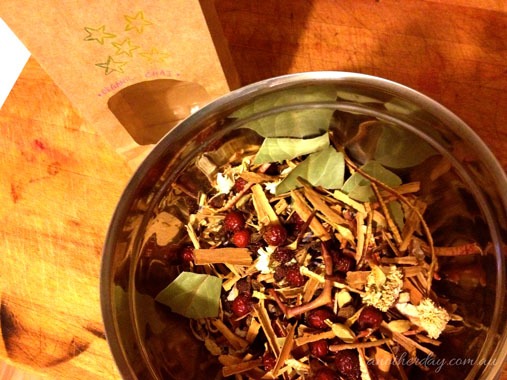
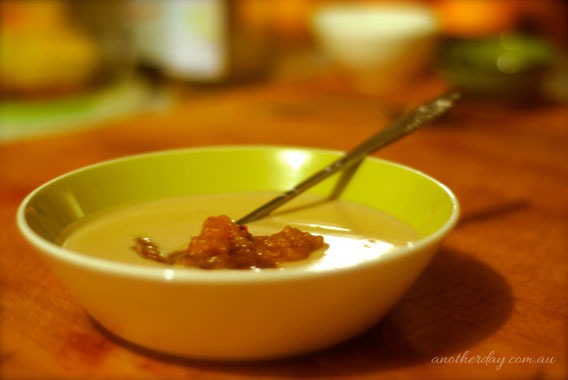
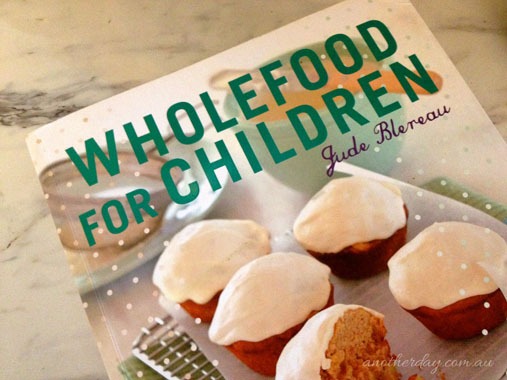
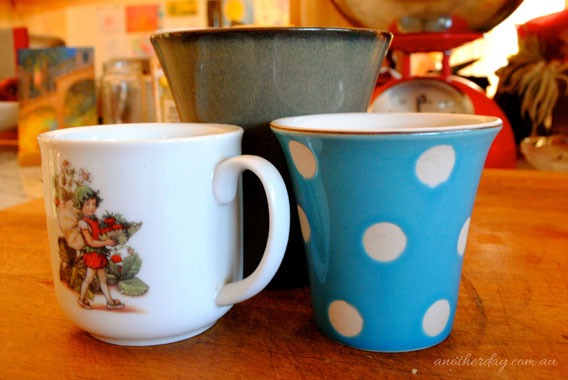
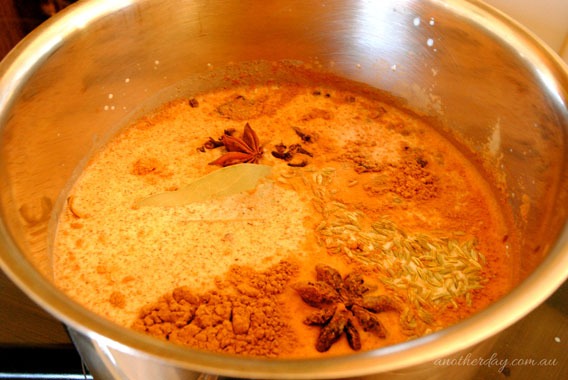
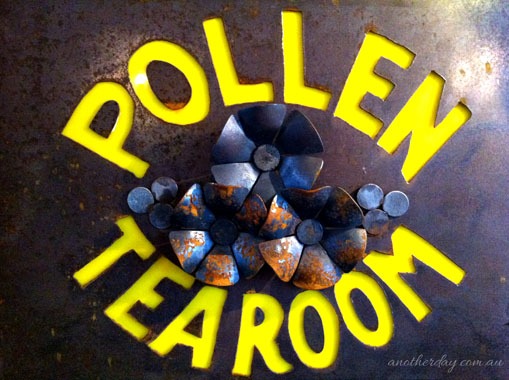
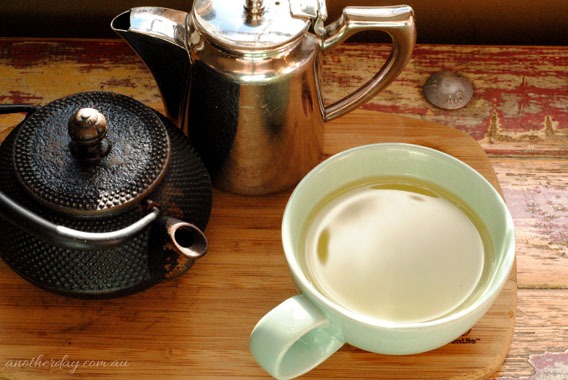
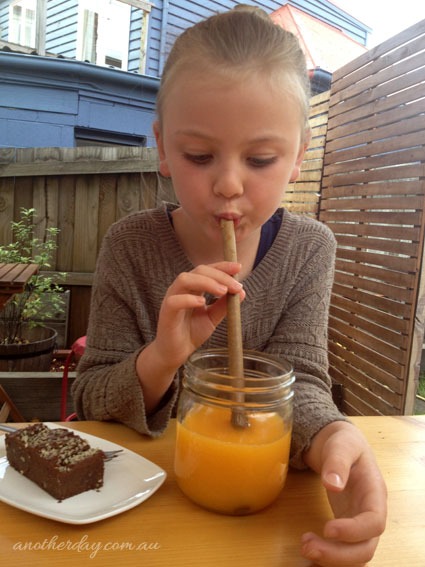
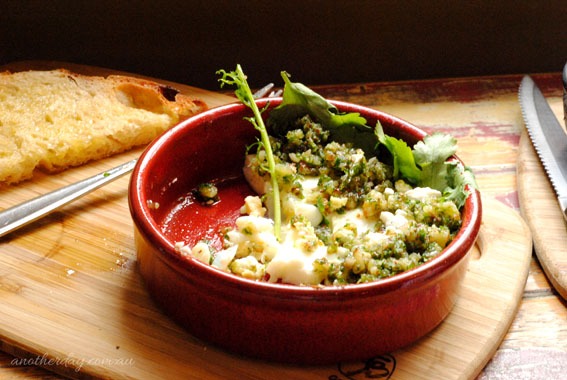
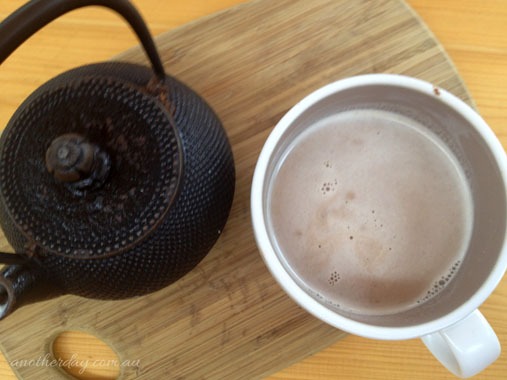
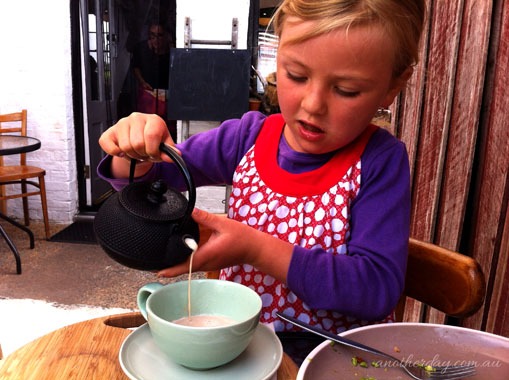
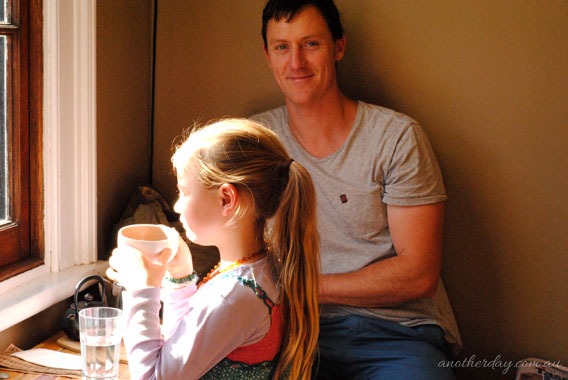

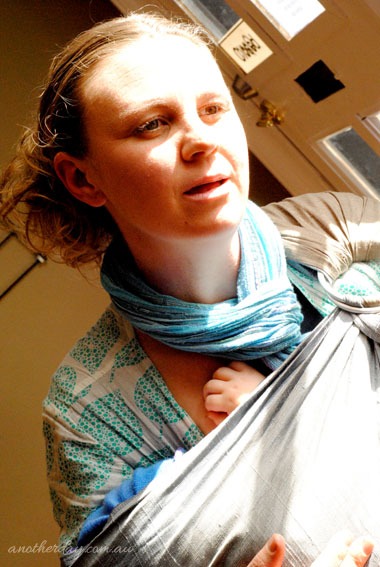


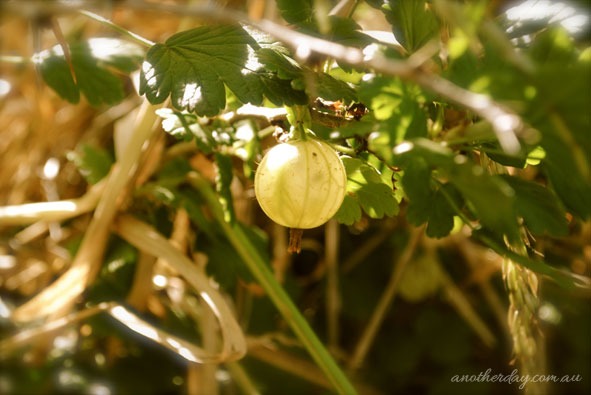
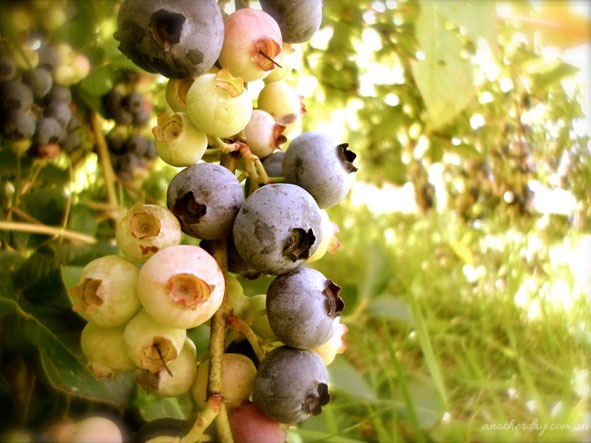

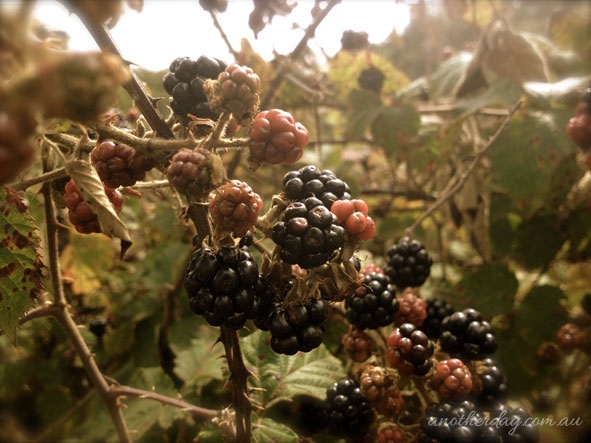
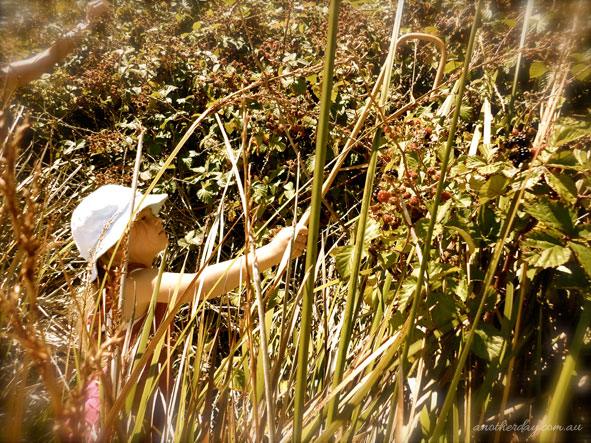 ::Blackberrying ‘Milly-Molly-Mandy’ style – with the help of a crook::
::Blackberrying ‘Milly-Molly-Mandy’ style – with the help of a crook::